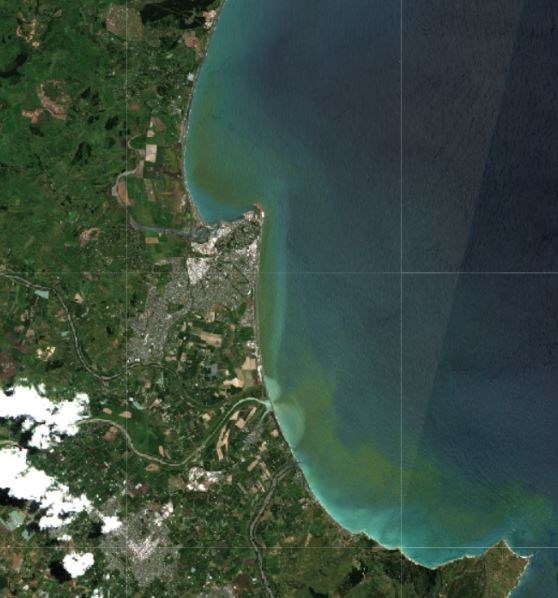What are marine algal blooms?
Algal blooms can appear in the marine environment when weather conditions like wind and water currents are favourable. Areas with slow water circulation and high water temperatures can often experience bloom events. Algal blooms are comprised of algae, or aquatic plants, such as phytoplankton or seaweeds. They are a natural and important part of the marine ecosystem but can be exacerbated by nutrient inputs from land-based sources. Marine algal blooms occur all around New Zealand.
What are phytoplankton?
Phytoplankton are microscopic organisms that contain chlorophyll and require exposure to sunlight to survive. Common kinds of phytoplankton are cyanobacteria, diatoms and dinoflagellates. They form the base of the marine food web and are an important food source for a wide range of marine life. They also store carbon, process nutrients and produce around half the world’s oxygen through photosynthesis. Most phytoplankton are too small to be seen with the naked eye until they are present in large enough numbers that they cause a bloom event. They are visible as coloured patches (usually rusty brown, red or green) on the sea surface due to the pigments they contain. Some species are even bioluminescent (glow at night).
Why is it a problem?
Most phytoplankton are harmless and are a natural occurrence in the marine environment. However, when they reach high concentrations, around 2% of algal species can have negative impacts such as:
- Producing toxins that lead to negative or lethal effects on animals. Some of these toxins can accumulate in seafood and cause illness in humans when consumed.
- Clogging fish gills, covering beaches or depleting oxygen levels in the water as they naturally die off, sink to the seafloor and decompose, becoming detritus.
- Disrupting the ecosystem (e.g., reducing light availability to benthic environment and reducing visibility for foraging animals)
How is it measured?
A surface water sample is collected from an area where a bloom is occurring, and the species present are identified and counted under microscope in a lab. Determining the species that are present in a bloom is key to assessing the potential toxicity levels and associated risk. Blooms are comprised of a range of species with some more dominant than others. If species that are known to have negative impacts are present at high levels, the bloom will be determined as high risk.

Satellite view of a marine algal bloom along coastline in Hawkes Bay coastline
FAQs
Can I swim where an algal bloom is present?
Your local regional council will undertake testing on the bloom if possible to do so. This will determine if the species present are known to be toxic to shellfish or finfish or have any known impact to humans. Impacts to humans can include respiratory and skin irritation. It is best to not swim in an area where an algal bloom is present. There are no known treatments for the conditions that result from exposure to an algal bloom. Remember to keep pets away from a bloom too!
Can I collect kaimoana from an area where an algal bloom is present?
There are some phytoplankton that produce toxins that can accumulate in seafood. These can build up to levels that cause illness in humans and cooking will not make it safe to eat.
Make sure to gut fish, crayfish and crabs before cooking. Eating fish and shellfish from affected areas should be avoided. The Ministry for Primary Industries (MPI) monitors recreational shellfish harvesting areas throughout New Zealand by testing shellfish for toxins and sea water for toxic algae. Further information and news on any current biotoxin alerts is available on the MPI website here.
When will it go away?
Algal blooms can persist in an area for an extended period of time. The bloom may shift within the water column or alongshore to other locations, depending on tidal and weather conditions. Algal blooms will naturally die off when they have depleted the local nutrient supply, or when conditions are no longer favourable. They then sink to the seafloor becoming detritus which can deplete the oxygen in an affected area. Some algal bloom species have a life cycle that includes a dormant cell phase, where they can survive in the seafloor sediment for years until favourable conditions occur again.
Algal blooms are a natural part of the marine ecosystem but can be made worse by human activities. Mitigation strategies for algal blooms can include reducing nutrient inputs from land into waterways and the ocean, avoiding seafloor/sediment disturbances and encouraging healthy seaweed and seagrass beds.
